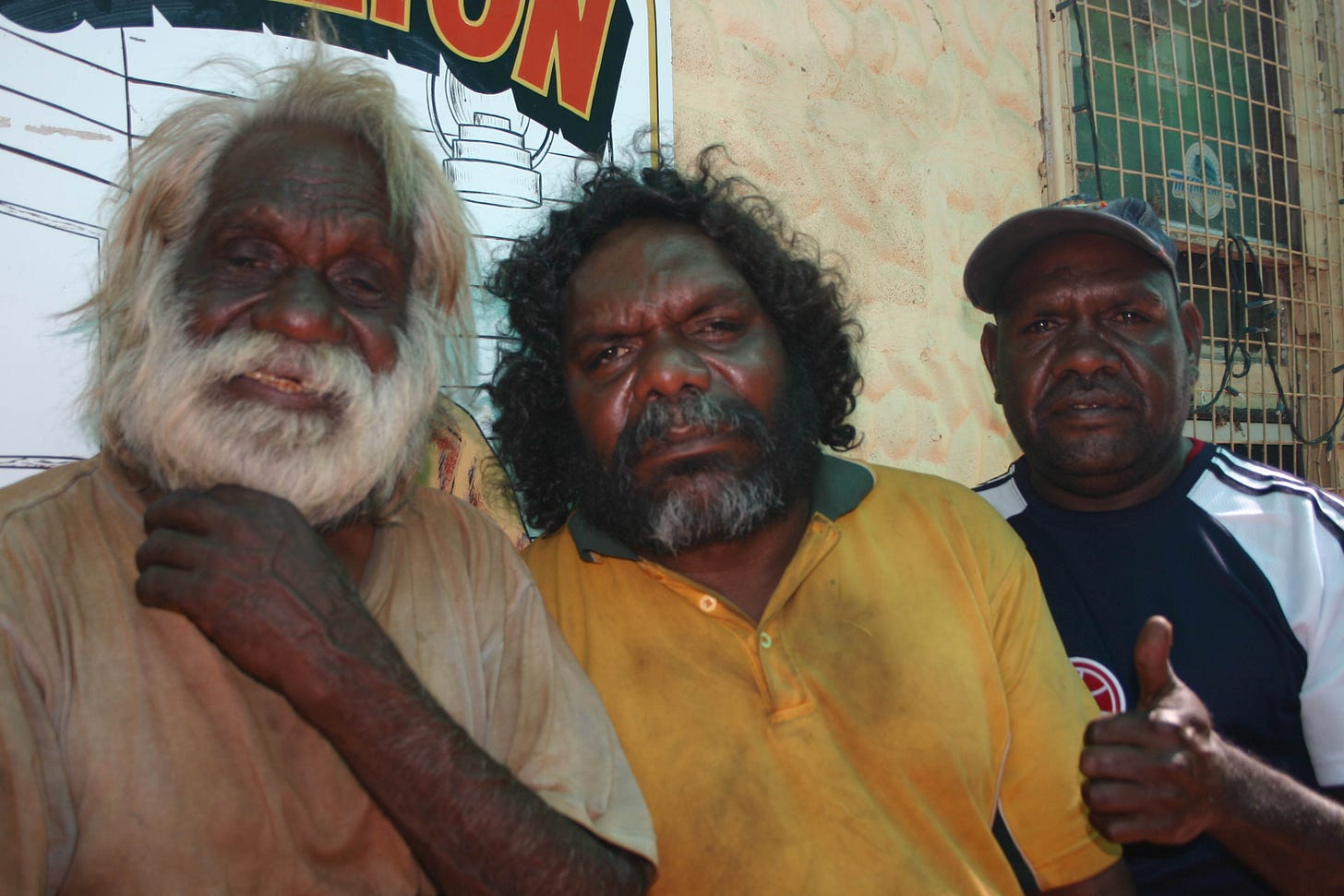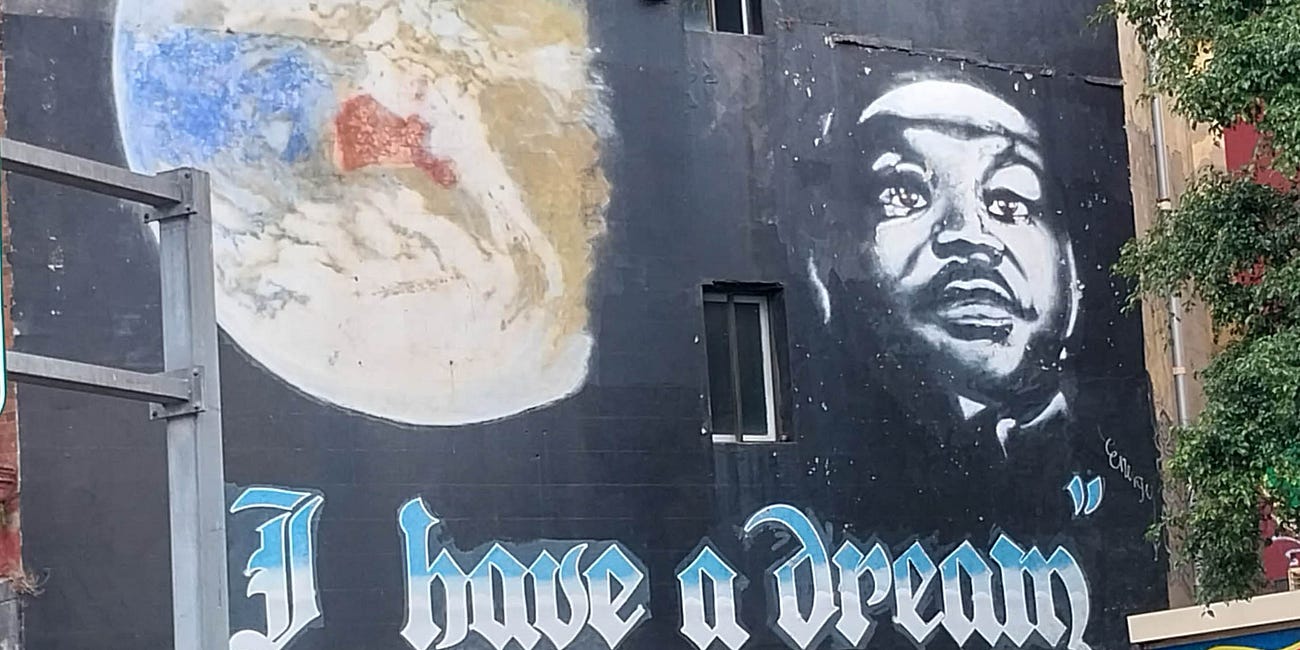It was Conan the Barbarian as Australians fought off overwhelming propaganda to vote "No" in a landslide
Voting day was like the Battle of the Mounds, or David beating Goliath - only better
Deep in Sydney’s posh enclave of Double Bay the battle of Sherbrooke Hall raged.
On Saturday, one stood against many.
Bridget alone stood for the No case against a sea of at least 8 Yes-men.
“We are one and free,” she said, holding out pamphlets, ignored by voters, out-flanked on all sides by the patronising and the privileged.
For hours in the hot sun she fought on.

The Sherbrooke Hall vote came down to Yes: 275 and No: 255 with 8 informal. “No” missed by just 20 votes. But like the 300 Spartans at Thermopylae, the battle was lost but the greater war was won.

The results are a landslide victory for ordinary working Australians including many Aboriginal people such as Jacinta Nampiginpa Price and Nyunggai Warren Mundine who said ‘No’.
It is genuinely amazing that the ‘No’ vote even won, because the Government together with large corporations spent millions promoting the ‘Yes’ campaign. Even some councils such as City of Sydney spent money on advertising ‘Yes’.
The referendum itself cost the country about $450 million, according to estimates from the Australian Electoral Commission (AEC) reported by the ABC.
‘Yes’ signs were everywhere, with professional printing and advertising. ‘No’ signs were few and often hand-painted.
The government and corporate class used Aboriginal people like wrapping paper to disguise the new organ of the state they wanted to create.
The Voice would not have given a greater say to Aboriginal people, it would have replaced their actual voices with a new government body populated by bureaucrats whose views the government likes.
Why couldn’t people see the actual words of the proposed change on the ballot when they voted?

Elitist enclaves voted ‘Yes’ such as the NSW seat of Wentworth. Double Bay is the electorate of wealthy Teal Allegra Spender, who attended Ascham, a private girls’ school that charges more than $42,000 per year in fees.
Warringah, north of the harbour also voted ‘Yes’ - it is the seat of Zali Steggall, another Teal.
The Teals represent the billionaire class, backed by Simon Holmes à Court, son of Australia’s first billionaire, Robert.
One Warringah ‘No’ voter told Letters From Australia that the referendum was “an attack on the citizens by the government”.
“It was an attack on the middle class, on the workers. We were at work - that’s why we weren’t at meetings. That’s why only old people were there. That’s why they called us ‘dinosaurs’,” he said.
The man was referring to journalist Ray Martin who said ‘No’ voters were “dinosaurs and dickheads” at a speech in Marrickville, Sydney, earlier in October, Radio 2GB reported.
Let’s actually help remote indigenous people instead
Perhaps now Australia can get on with actually helping Aboriginal people in ways that matter. Sometimes that doesn’t involve money but a change in thinking.
One way would be introducing more 99-year-leases on remote Aboriginal communities to allow individual people to have the security of tenure that comes from private property ownership.
I spent a decade in Darwin and visited six remote communities in the time I was there.
I saw the unintended consequences of separate laws for Aboriginal people. Some of the worst problems come from special rules designed to “help”.
Here is just one example.
Remote Aboriginal people can’t own anything. There’s no security of tenure to use for a loan or insurance, to start a bakery or eco-tourism business or buy a home.
Aboriginal land in the Northern Territory is collectively owned by communities under the Aboriginal Land Rights (Northern Territory) Act 1976, and administered by land councils.
Nobody plants a garden or fixes their house because they don’t own it and never will. When everyone owns everything, nobody owns anything. Powerful families run it. Don’t cross them.
More than 50 percent of the land mass of the Northern Territory is owned by Aboriginal communities in perpetuity and more than 85 percent of the coastline, the Northern Land Council says on its website.
Shouldn’t they be prosperous with so much land?
No. Billions disappear down the remote housing hole, year after year, because the problem isn’t money. It isn’t even corruption, though there’s some of that. The problem is that the basic laws are different.
For more on the complexities of this, see Leon Terrill’s UNSW Law Journal article The days of the failed collective: communal ownership, individual ownership and township leasing in Aboriginal Communities in the Northern Territory.
Individual land ownership is the most basic building block of a functioning economy.
The land where you live has lot boundaries. You can borrow money from a bank and buy a house or lot. You can’t be kicked out because someone didn’t like the way you looked at them. You have security of tenure. You can borrow against it and get insurance. You can start a business, or plant a garden. It’s yours.
You can do this. Remote Aboriginal people cannot do this because they can never own anything. This is entrenched racism built into the law, producing failure.
The very first thing British colonisers did was survey the land to lot up the boundaries in preparation for founding a settlement. That’s how important individual property ownership is.
As I left the Territory in 2014, the cadastral surveys to create lot boundaries were only just being done on remote Aboriginal land for the first time.
The best of intentions went into the ALRA: the government didn’t want Aboriginal people to sell to outsiders, dispossessing future generations of ancestral land.
Other solutions exist, such as 99-year-leases which give security of tenure but also return the land to the community in time. This has been tried successfully on the Tiwi Islands.
This ABC story has photos a decade after the first leases were signed, but doesn’t really explain the difference it made for those who bought their own homes. A former work colleague who went there, however, told me the difference is “chalk and cheese”. The owned houses were neat, tidy, cared for, and had gardens.
It’s time to start looking at things other than “racism” and “recognition” in order to actually repair the damage that has been done to Aboriginal Australia by policies that don’t work.
Australia's referendum votes on a constitutional change, but nobody knows what it does
Australia goes to the polls on October 14 over whether to change its constitution, and the lunacy is mind-boggling. Every morning I drive a bus to pay my bills, which makes it easy to ask ordinary people what they think it’s all about. Here’s a sample:







October 14, 2023 will one day be officially marked in the history books as the day Australians started to reclaim their country from the forces of darkness. The revolution is NOW!
For any with actual experience, this was never about Australian Aboriginal welfare whatsoever!